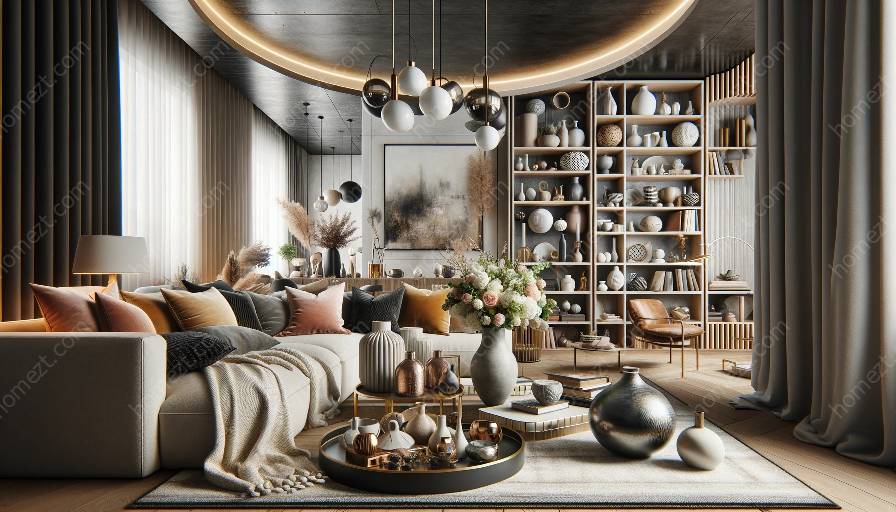Interior design is not just about choosing the right furniture and colors—it's also about the finishing touches that pull everything together. Accessories play a crucial role in creating a cohesive design theme within a space. When used strategically, accessories can tie the entire room together, reflecting the homeowner's personal style and enhancing the overall atmosphere of the space.
Understanding the Role of Accessories
Before delving into how to use accessories to create a cohesive design theme, it's important to understand the role of accessories in interior design. Accessories encompass a wide range of items, including artwork, decorative objects, textiles, lighting fixtures, and more. These elements provide the opportunity to add personality and visual interest to a space, making it feel inviting and complete. When used thoughtfully, accessories can transform a room from ordinary to extraordinary.
Accessorizing vs. Decorating
It's essential to distinguish between accessorizing and decorating. While both concepts contribute to the overall design of a space, they serve different purposes. Decorating typically involves larger elements, such as furniture, rugs, and drapery, as well as architectural features like moldings and built-ins. Accessorizing, on the other hand, focuses on the smaller, decorative elements that add character and charm to a room, including wall art, throw pillows, vases, and other decorative objects. The art of accessorizing allows homeowners to infuse their personal style and preferences into their living spaces, making them feel more personalized and unique.
Coordinating Accessories for Cohesive Design
When it comes to creating a cohesive design theme with accessories, coordination is key. Here are several strategies to consider:
Color Palette
Selecting a cohesive color palette for accessories is an effective way to tie the elements of a room together. Whether it's through complementary, analogous, or monochromatic colors, coordinating the hues of accessories with the overall color scheme of the space creates a harmonious visual flow.
Texture and Material
Varying textures and materials in accessories can add depth and visual interest to a room. Consider mixing and matching materials such as wood, metal, glass, and textiles to create a dynamic and visually engaging environment.
Scale and Proportion
Understanding the scale and proportion of accessories is crucial for achieving a cohesive design. Balance larger statement pieces with smaller, complementary items to create visual harmony and prevent the space from feeling cluttered or unbalanced.
Theme or Style
Choosing accessories that align with the overarching theme or style of a space reinforces the design concept and creates a unified look. Whether it's a modern, traditional, or eclectic aesthetic, selecting accessories that resonate with the style adds cohesiveness to the overall design.
Focal Points
Accessories can be used to accentuate focal points within a room, such as a fireplace, an accent wall, or a striking piece of furniture. By strategically placing accessories around these focal points, it draws attention to them and reinforces the design focus.
Blending Accessorizing and Decorating
Successful interior design involves a seamless integration of accessorizing and decorating to achieve a cohesive and visually appealing space. By marrying the two concepts, homeowners can elevate the design of their interiors. Here are some tips on how to blend accessorizing and decorating:
Integrating Accessories with Decor
Look for ways to incorporate accessories into the overall decor of a room. For example, selecting throw pillows that complement the upholstery of a sofa, or displaying artwork that harmonizes with the color palette and style of the space can effortlessly tie everything together.
Layering Accessories
Layering accessories adds depth and complexity to the design. Experiment with layering elements such as rugs, throw blankets, and decorative objects to create visual interest and a sense of richness in the space.
Functional and Decorative
Choose accessories that not only contribute to the aesthetic appeal of the space but also serve a functional purpose. For instance, incorporating stylish storage solutions or decorative lighting fixtures that provide both form and function.
Conclusion
Accessories are a powerful tool in the hands of an interior designer or homeowner, capable of transforming a room and imbuing it with character, style, and personality. When used with careful consideration and attention to detail, accessories can shape a cohesive design theme within a space, seamlessly integrating with the overall decor to create a harmonious atmosphere. By understanding the role of accessories, coordinating them thoughtfully, and blending accessorizing with decorating, anyone can master the art of using accessories to elevate their interior design.






































